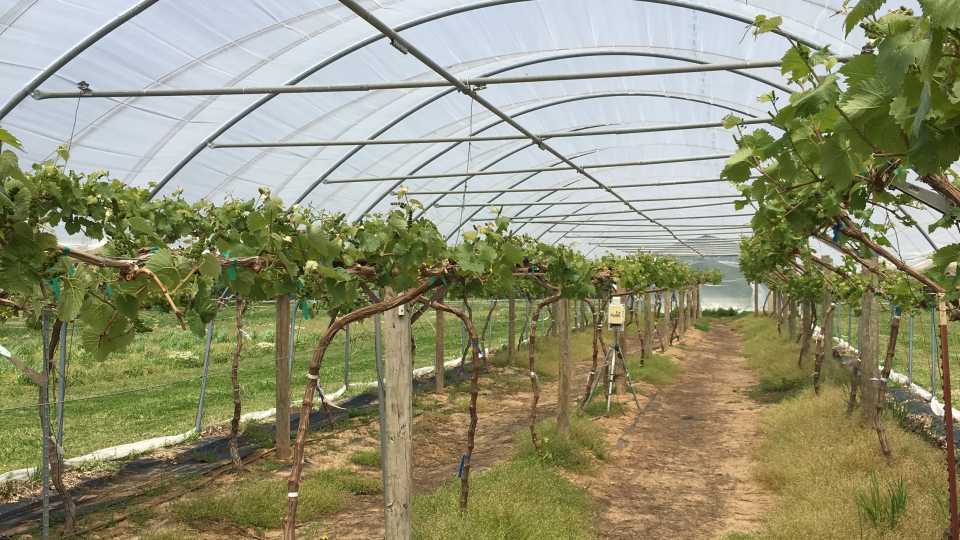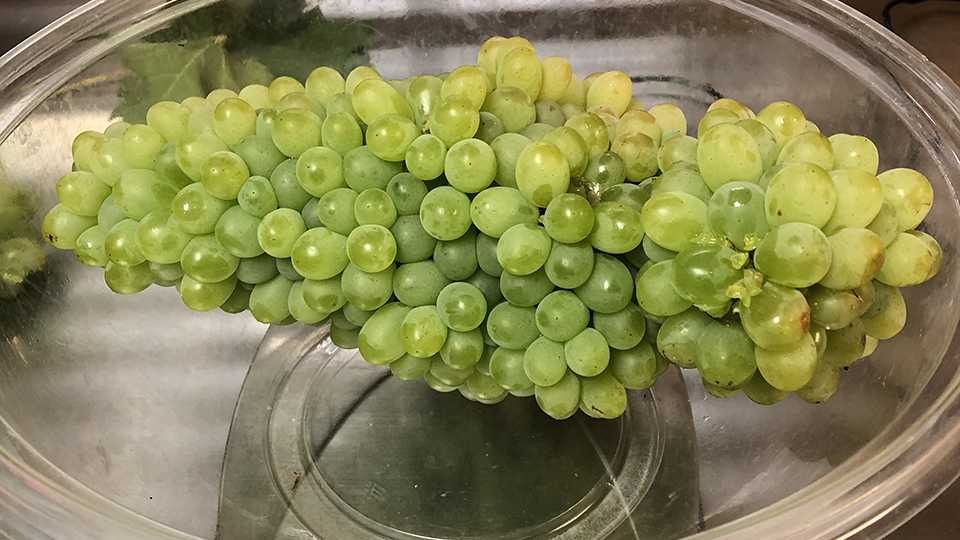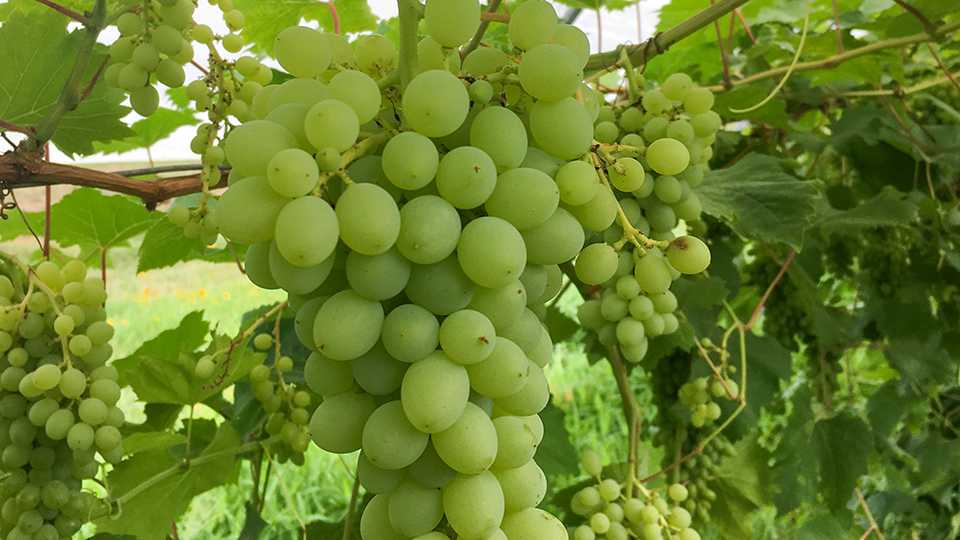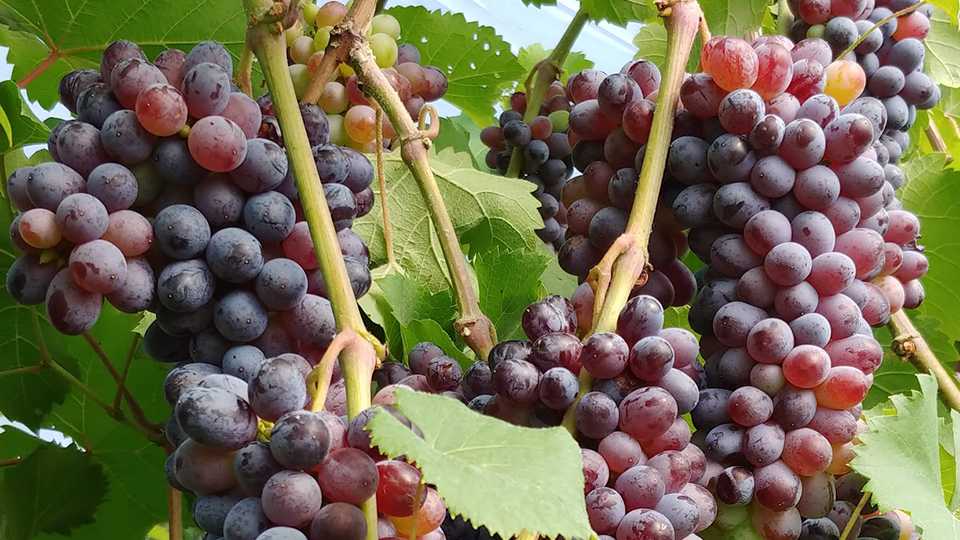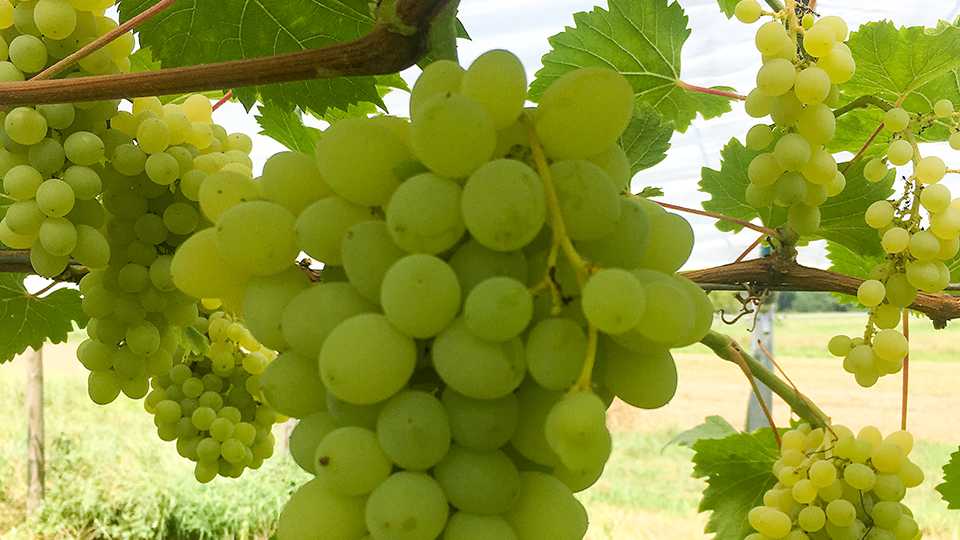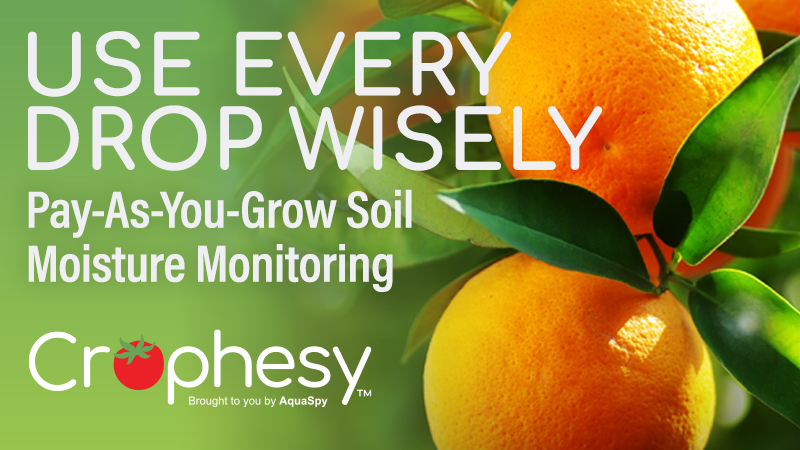Grape Expectations Growing up in High Tunnels

While Arkansas provides nearly half of the nation’s rice, and plenty of soybeans and corn, the state’s humid climate doesn’t exactly lend itself to growing grapes. How-ever, table grapes are a highly valued crop and so, as in all things, if there’s a market, people will look for a way to capitalize.
Elena Garcia, Horticulture Professor and Researcher with the University of Arkansas System, had heard that growers were looking for a perennial crop that would be of interest to local consumers. Some of the delicious table grapes from the university’s fruit breeding program came to mind, but she knew the state’s climate would make field production difficult.
“We have hot, humid summers, and it can rain when the grapes are ready to harvest, causing fruit cracking and diseases,” she says. “The climate supports a host of fungal diseases, and insect pests are abundant, so growers have to use a lot of pesticide to have an economically viable crop.”
Trying High Tunnels
Meanwhile, Garcia had grown strawberries and blackberries in high tunnels and wondered if these plastic-covered structures that function like greenhouses could provide an alternative way to grow grapes. In 2014, she planted some of the university’s cultivars (‘Faith’, ‘Jupiter’, and ‘Gratitude’) in a 180-foot by 25-foot-high tunnel at the University of Arkansas System in Fayetteville. Garcia and her team used several training systems for the grapes: a modified high cordon facing east, one facing west, and a Geneva double-curtain trellis, all to accommodate the shape of the tunnel and maximize growing space.
With Arkansas’s climate, most harvests don’t come until the second or third year after planting. But the grape vines grew so vigorously in the tunnel that they bore fruit after just one season.
“We were really surprised by the results,” Garcia said. “This was a very positive trait, the ability to produce the year after planting, with relatively good yield and quality.”
Furthermore, the tunnel also helped minimize diseases like black rot and insects like grape berry moths, so the team reduced pesticide applications for the next year. However, the research group ran into some problems with the second trial. Grape production was exploding, with 45 kilograms of fruit per vine whereas 10 to 15 kilograms would be more ideal. The increased production decreased the fruit quality and left the vines susceptible to disease.
Customizing Cultivars
Garcia received a grant from Southern SARE (Sustainable Agriculture Research & Education) in 2017 to introduce a cluster-thinning treatment to help manage crop load. She was also able to set up another trial with a local grower at Barnhill Orchards, a cooperating farm in Cabot, AR.
Having a second location farther south helped provide more data on how various cultivars performed. However, birds favored ‘Faith’ in the high tunnel, so Garcia planted another cultivar, ‘Hope’, along with ‘Jupiter’ and ‘Gratitude’ at the Barnhill location. While ‘Gratitude’ did well in high tunnels up north, it didn’t survive the Cabot winter.
Garcia explains that while grapes in Fayetteville have a chance to acclimate to the cold, they succumb to the early frost in Cabot, which typically stays warm through October. ‘Hope’ tended to be disease prone, and ‘Jupiter’, an older cultivar, performed well in both locations.
Overall, Garcia says the trial has been successful for Barnhill, a highly diversified grower selling to local markets and through a roadside stand.
“The grower seems happy with the results, which provide him with an alternative crop to keep his labor busy in mid- to late-summer, when strawberry and blackberry harvest is over,” she says. “It’s an added commodity for him.”
So far, her research indicates that growing grapes in tunnels could be a profitable business for other growers in similar climates, such as Eastern Oklahoma, Eastern Tennessee and Southern Missouri. However, even though the grapes are grown in high tunnels, Garcia says it’s still critical to choose a cultivar that will work in local environments.
Future Research
Garcia is retiring in June and hopes grad students and other researchers will continue to study cluster thinning and costs.
While a typical grape leaf in the field in Arkansas might be 6 inches across, the ones in the tunnel can reach 12 inches. While the research team hasn’t seen success with their cluster thinning practices, Garcia says that more severe thinning or root pruning may be helpful in slowing down the vine and managing crop loads.
“These grapes are on steroids,” she says. “They really, really like the environment, so they just produce. Someone coming in could see how we can manage the crop load, because having such a large production means lower fruit quality, lower sugar, and more disease.”
Garcia would like to see a formal cost assessment, though she thinks purchasing a high tunnel for growing grapes is a profitable investment based on her research. For example, after the initial investment, you only need to replace the plastic lining every four or five years. You can also count on a crop after the first year while applying fewer pesticides, possibly fewer than eight, while field crops may require up to 12.
“We’re never going to compete with California, that’s for sure,” Garcia said. “But for local markets, someone can say, ‘Hey, I have this delicious-tasting table grape for a roadside stand, pick-your-own, or for a farmer’s market.’ I wish I was staying because I’m really excited about this project.”





